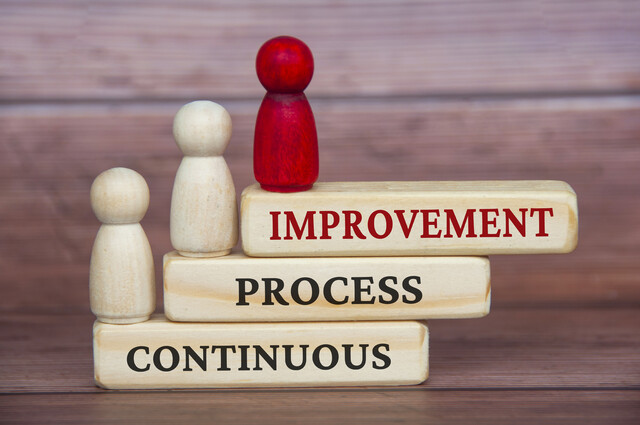Capital
Whether your business provides landscaping services or manufactures pogo sticks, long-term survival requires capital. Capital includes money and material goods that are used to operate the business or used for investment into the company. Durable equipment, such as vehicles or buildings, are examples of capital. Cash used to purchase those vehicles or buildings is also considered capital. Real estate owned by the business is also a capital asset. The capital that a company possesses is used to determine the value of the business, and provides lenders a picture of the company's financial health.
When it comes to finding capital for a business, there are several options to explore. Government agencies, such as the Small Business Administration (SBA), on both the federal and state level have programs that lend to small businesses. Most programs require that criteria must be met in order to be eligible for funding. For instance, African-American and female owners can receive assistance based on their minority status. Some programs provide grants that do not need to be repaid, whereas others are structured as fixed-rate loans.
Venture capital firms look to invest in specific businesses and many times offer managerial guidance as well. The tradeoff when borrowing from this type of investor is that you give up your complete control of the company and a percentage of the company's profits for a period of time. Private investor angels are wealthy individuals or small groups that provide start-up financing in exchange for an equity position in the company. They may require active or passive participation in day-to-day operations.
Issuing stock to investors is another option for financing assistance. Stock can be issued to management, employees. or third-party investors in order to generate funds. The stockholder will typically have a role in decision-making regarding major objectives such as buying a competitor or purchasing a building. A company can obtain significant funding by making a stock offering on a public stock exchange. This is not used for start-up purposes but can help an established company grow quickly. There is a formal process and heavy regulation when you are involved in this type of financing, and companies must have a certain amount of capital to qualify.
An alternative way to get capital is through a sale leaseback of equipment the business owns. What happens here is the company that owns a large asset, typically machinery or real estate, sells the asset to a financing company that then leases the asset back to the business. This gives the business funds for operations while allowing it to continue to use the asset it previously owned. It also removes the debt from its financial reports, thereby making the company look more attractive to investors and other interested parties.
Invoice factoring is another way to generate funds, though this type of financing is only available to well-established companies. If a company bills its customers, there may be delays in payment. This negatively affects cash flow; it can mean using cash reserves to fund operations or having to delay activities until the debt is paid. Finance companies will purchase the outstanding debts by paying the business a percentage of the amount due. The difference in the amount is the cost of "selling the invoices." It can be expensive to do this, especially if the accounts are long-overdue.
Finally, banks and credit unions have business loans that can be paid over several years. Loans are typically fixed-rate and can be unsecured or secured by collateral. Some lenders offer cash advances for emergency needs or lines of credit that allow the company to borrow funds when it sees fit. The SBA offers government-backed loans through local lenders. There can be restrictions on how a business uses the funds; for example, most lines of credit do not allow major purchases like real estate.
-
cover sheet: company name, location, and mailing address;
-
statement of purpose: describes the reason the business will exist;
-
business details: includes specifics about the business, management, personnel, competition, operating procedures, competition, and insurance coverage or regulatory compliance;
-
financial data: lists all loan applications, capital available, balance sheets, a break-even analysis, a pro-forma projection for a three-year period, and a cash-flow statement;
-
supporting documents: copies of licenses, tax returns, leases, management resumes, legal papers such as a franchise agreement, and letters of intent from suppliers.
Once the plan is completed, the prospective borrower must apply for the financing. The approval process can take as little as a few hours for cash advances or as long as several weeks, such as for an SBA-guaranteed loan through a bank. There are two primary forms of financing for businesses. Debt financing requires a fixed term to be repaid over a defined period, a process known as amortizing. The benefit of this form of financing is that the exact cost of borrowing is known and the repayment terms are fixed. A line of credit is a variation that requires fixed repayment terms once the funds are used. Some lenders offer a revolving line of credit, with which a borrower can re-borrow the loan amount once the debt is paid.
During operations, a manager will typically review the costs associated with running the business. The most effective way to manage expenses is to create an operating budget. Similar to a personal or family budget, this plan will include income and expenses. Income should be categorized for each type of sale made. For example, if your company sells computers, there should be a category for unit sales of each variation of machine sold, and if you offer technical support or repairs for a fee, then include a category for each service you provide. Detailing each sale separately will help you analyze areas the company can focus on to develop more income.
There are two kinds of expenses to document: fixed expenses and variable expenses. Fixed expenses are those costs that remain fairly constant, no matter what the company's output is. Items can include:
� rent;
� salaries;
� some utilities (like an Internet connection);
� equipment leases;
� insurance;
� licenses and permits;
� loan payments.
Variable expenses fluctuate with changes in sales or production/output. Examples of these types include:
� wages;
� some utilities (like electricity);
� taxes;
� material or supply costs.
Some costs may be stable for extended periods but fluctuate in response to circumstances. Examples include:
� costs for advertising and marketing;
� legal fees;
� accounting expenses;
� consultant fees.





























